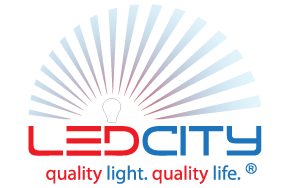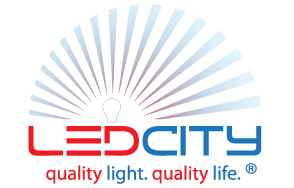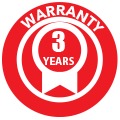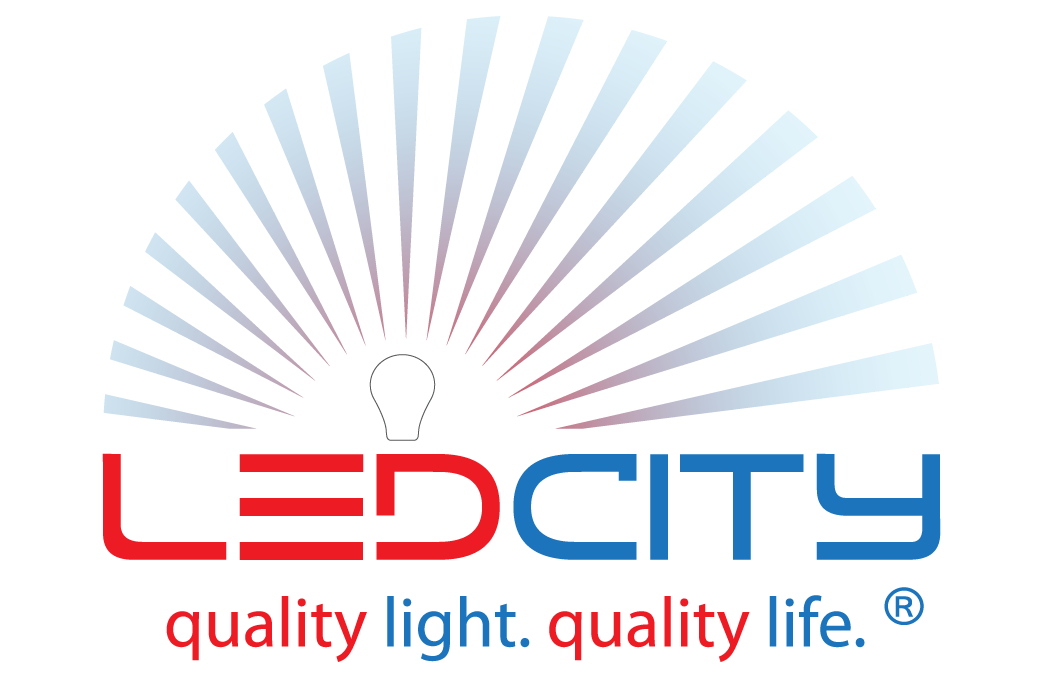LED Lighting for Offices

Your company office is where strategies are made, targets reached and goals realised. It is where dreams are made reality, and hopes are turned into dollars and cents. For that to happen, you need to create an environment that is conducive to all of those things. One that encourages interaction, creativity, productivity, and stimulation. Getting the lighting right in your office is one of the most important aspects for developing a prosperous business, and can literally be the difference between success and failure.
Office Lighting Objectives
There are three key elements to creating a winning office environment. Though each needs to be looked at individually, they all interact with each other to make up the whole picture.
Productivity, Creativity, and Well-Being
It has been proven that providing employees with a properly illuminated space to work, aids both innovation, and productivity. By creating an atmosphere that motivates your workforce, you will ensure you have an environment where people are not only happy to work, but are able to work to their full potential. One of the most important elements to achieving this is flexibility. Different people require different levels of lighting. This will change during the day, as they become more or less tired; as external lighting changes and as their tasks change. By putting the control into the hands of the employees, you will enable them to find the lighting that is perfect for them – at that specific time, for that particular task. And in doing so, you will not only have a happy employee, you will a more motivated and productive one.
Well-being has a major influence on a worker’s performance. It is crucial that they are comfortable, both physically and emotionally, and the easiest way to achieve this is through their environment. Once again, by giving employees the ability to control that environment – and lighting is one of the biggest factors in that - they will be more comfortable, happier, will have a more positive attitude and hence will be more creative and more productive.
A Positive Brand Image
It is one of the biggest clichés in business and life – you can’t make a first impression twice. So as a company you need to ensure that the image you give to everyone – employees, customers, and visitors alike is the correct one. Your office needs to represent your values and your objectives as a company. By providing a welcoming, engaging environment, you are instilling a positive message into everyone who visits those offices. These may range from clients to prospective employees coming for an interview.
Attention to detail when it comes to the lighting can set you apart. Not only in ensuring the correct levels of general and ambient lighting, but in the little touches of architectural and accent lighting. How you light the reception and meeting rooms, will set the mood for the visitor experience.
It is also essential that all signage is highlighted perfectly. This is the most obvious statement your company can make, and is seen by everyone, not just those who enter the building. By getting that right you will ensure you not only make an impression on as many people as possible, but it is the right impression.
Efficiency
As demonstrated lighting plays a crucial part in the health and productivity of your employees, but equally as important to running a sustainable business is the ability to manage costs. Having the right lighting system, not only means the one that creates the right atmosphere and image, it also means the one that is right for your balance sheet. The correct LED lighting means you can achieve the latter without compromising on the former. LED lighting is between 80% and 90% more efficient than traditional methods. This not only significantly reduces your costs; it is also good for the environment – something that will bolster your company and brand image.
Not only are LED lights more efficient to run, they have considerably longer lifespans, and hence drastically reduce your maintenance costs. On average they last 10 times longer than fluorescent bulbs and over 130 times longer than incandescent bulbs.
Lighting Office Spaces
Within an office building, there are many different spaces. These will be not only be used for different business activities, each with specific lighting requirements, but the nature of those spaces will differ as well. Both of these factors need to be considered to ensure you have fit for purpose lighting in each and every part of the office.
Reception Area
This is the first area of your offices that visitors (clients, customers and potential employees) will see, and hence this is where you have the one and only chance to make that all important first impression. As always, the lighting needs to compliment, not compromise the architecture, while promoting a strong brand and company image. It also needs to ensure a safe transition from outside to inside, whatever the time of day, or weather conditions.
More often than not, the reception has two distinct functions. The first of these is an area for the receptionist to carry out their duties. Lighting needs to ensure they are able to carry out those tasks quickly and efficiently, while also illuminating his or her face. This makes them appear more welcoming and approachable.
The second function is the waiting area for visitors. This should be bright enough so they are able to perform tasks such as reading, but should also convey a restful and relaxed atmosphere.

Office Area
Open plan offices are usually large areas where a variety of different tasks are carried out by many different people. Panel and downlights are ideal for providing sufficient ambient light to give a comfortable, even illumination, and then downlights can provide task lighting as and where it is needed. It is this task lighting that gives the individual the power to change the lighting for his or her specific requirements throughout the working day.
Private offices are not only used as individual workspaces, but also as group meeting areas. The ambient light needs to allow for navigation and conversation while task lighting should provide additional illumination over the desk, any meeting tables as well as other work surfaces. Private offices allow for more tailored and personalised accent lighting. For instance, it can highlight paintings, company artwork or models. Adjustable, recessed housings or track heads are ideal for this.

Conference Rooms
These are some of the most versatile spaces in the building. Therefore, the main consideration when choosing the lighting is flexibility. General lighting needs to be dimmable, while task lighting needs to provide adequate illumination so those around the table are able to read and write comfortably.

Brainstorming and Breakout Areas
Whereas all the other areas of an office will more than likely follow the same theme, with similar lighting designs, these spaces are very often designed to stand out. Though there are the same demands for general and task lighting, it is a chance to be creative and bring in modern and imaginative lighting products such as pendant and designer lights.

Corridors
Corridors are the passage way in office for people to move around and they can be part of the functional spaces too, for examples, displaying artworks or awards for company or brand image. It is important to note that lighting accounts for 40% of all electricity used in office buildings and it would be a waste of energy if the lighting stays on when there is no one around. Therefore, lighting with more energy-saving or smart controls is recommended in these areas.

Other Considerations
| Task Areas | Working Plane | Em | UGRL | CRI (Ra) |
|---|---|---|---|---|
| Reception Area | 0.75m | 300 lx | < 22 | 80 |
| Corridors | 0.2m | 100 lx | < 22 | 80 |
| Business Hall | 0.75m | 300 lx | < 22 | 80 |
| Open-Plan Office | 0.75m | 300 lx | < 22 | 80 |
| Private Office | 0.75m | 500 lx | < 22 | 80 |
| Meeting Room | 0.75m | 300 lx | < 22 | 80 |
Em - the minimum recommended illuminance
UGRL - the maximum UGR (Unified Glare Rating)
CRI (Ra) - the minimum Colour Rendering Index
Task Areas
This is the area where work will be carried out and as a result is where minimum illumination is required.
Vertical Task Areas
Shelves and cabinets are regarded as vertical task areas if work is carried out on or in them for any period of time. The vertical task area starts at 50cm above floor level and in the case of shelving and ends 200cm above floor level.
Working Plane
In an office area, both open plan and private, the working plane is considered to be 75 cm from floor level - the standard height of a table. When measuring the illumination level, it should be taken at this height. In corridors, the working plane is 20 cm.
Minimum Recommended Illuminance
There are certain requirements for workplace safety, specifically in the minimum amount of lighting required for working areas. According to AZ/NZS 1680.1:2006 (a widely-used lighting standard), the recommended minimum amount of lighting for reading is about 320 lux.
Glare and UGR
Glare is defined as excessive brightness, caused when there is a significant difference between the source and the background light. It can be both direct and indirect, and can cause issues in offices where visual comfort is critical. Indirect or reflected glare is caused by reflections from interior surfaces. Good luminaire positioning, as well as using high-quality fittings will reduce both types.
Glare is a measurable phenomenon and is calculated using a formula. The result is the Unified Glare Rating (UGR), which is the luminance of the light source divided by the background luminance of the room. The UGR ranges from 5 to 40, with the lower the number the better, or less glare. Any rating of 30 and above will cause definite issues, particular in an office.
Colour Rendering Index (Ra)
The Colour Rendering Index (CRI or also denoted as Ra) is a measure of light’s ability to properly render colour (ranges from 0 to 100 - the highest possible score). Colour rendering is important especially for commercial applications in order to reveal true and vivid colours of the products, artworks or architectural elements that are of interest. Lighting products with 80 Ra or above are recommended for office environments.










